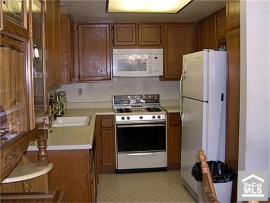Washington is recycling a dumb idea from 2008 to reduce the interest rate on underwater loan owners. It's an expensive plan that rewards imprudent borrowing.
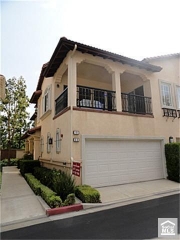
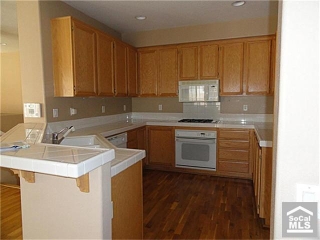
Irvine Home Address … 9 GERANIUM Irvine, CA 92618
Resale Home Price …… $416,900

everybody in town was nowhere to be seen
so I parked near a house that was marked thirteen
I went up to the door, but there was no one there
I had an eerie feeling in my very bones
and soon it started to rain, and there was no way out
maybe this was a bad idea
oh no
maybe this was a bad idea
oh no
Lemon Demon — Bad Idea
 Government intervention in financial markets is typically a bad idea. The usual result is to shift the consequences (losses) from those who deserve to bear the brunt of their mistakes — in this case lenders and borrowers — on to those who don't deserve to pay a price — in this case renters and ordinary taxpayers. What compelling reason is there to force renters who did not participate in the bubble mania to pay the bills?
Government intervention in financial markets is typically a bad idea. The usual result is to shift the consequences (losses) from those who deserve to bear the brunt of their mistakes — in this case lenders and borrowers — on to those who don't deserve to pay a price — in this case renters and ordinary taxpayers. What compelling reason is there to force renters who did not participate in the bubble mania to pay the bills?
The people who benefit from this ripoff will justify their actions by claiming it was necessary to save the broader economy. We need stimulus, right? Perhaps we do, but creating stimulus by giving money to the least deserving isn't my idea of good public policy.
U.S. May Back Refinance Plan for Mortgages
By SHAILA DEWAN and LOUISE STORY
Published: August 24, 2011
The Obama administration is considering further actions to strengthen the housing market, but the bar is high: plans must help a broad swath of homeowners, stimulate the economy and cost next to nothing.

The proposed plan will only help the most indebted (least prudent) borrowers. It wil stimulate the economy, but it will be very costly.
One proposal would allow millions of homeowners with government-backed mortgages to refinance them at today’s lower interest rates, about 4 percent, according to two people briefed on the administration’s discussions who asked not to be identified because they were not allowed to talk about the information.
A wave of refinancing could be a strong stimulus to the economy, because it would lower consumers’ mortgage bills right away and allow them to spend elsewhere.
This would be a good thing for the economy; however, the same result happens if the house is foreclosed on and resold at a lower price to a less indebted borrower. In fact, since the debt is even lower, the economic stimulus is much greater. The government solution helps banks keep their bad debts alive.
The foreclosure solution is obviously superior. The reduced debt and associated debt service would be a larger stimulus, and banks will endure more of the losses they deserve.
But such a sweeping change could face opposition from the regulator who oversees Fannie Mae and Freddie Mac, and from investors in government-backed mortgage bonds.
You think? The cost of this proposal is absorbed entirely by investors in the GSEs which is mostly the US government. This is a tax subsidy to irresponsible loan owners intended to benefit banks who are even less deserving of assistance. That meets my definition of a lose-lose transaction.
Administration officials said on Wednesday that they were weighing a range of proposals, including changes to its previous refinancing programs to increase the number of homeowners taking part. They are also working on a home rental program that would try to shore up housing prices by preventing hundreds of thousands of foreclosed homes from flooding the market. That program is further along — the administration requested ideas for execution from the private sector earlier this month.
The REO rental program is an even worse idea. It delays clearing the market, and makes the government one of the biggest landlords in the country. Government owned housing is typically among the worst managed in the country, and the large projects they already mismanage are easier to manage than hundreds of thousands of individual homes. There is no reason to believe the government could manage this portfolio successfully.
But refinancing could have far greater breadth, saving homeowners, by one estimate, $85 billion a year.
That $85 billion in savings they are touting will be added to the billions of losses the government has already covered since taking over the GSEs. This is not a low-cost program. That $85 billion in revenue would have helped offset losses at the GSEs. Instead it will go to benefit banks and loan owners. That isn't the way I want my tax dollars squandered.
Despite record low interest rates, many homeowners have been unable to refinance their either because they owe more than their houses are now worth or because their credit is tarnished.
Exactly how a refinancing plan might work is still under discussion. It is unclear, for example, whether people who are delinquent on their mortgages would be eligible or whether lenders would administer it. Federal officials have consistently overestimated the number of households that would be helped by their various housing assistance programs.
Why would we give this benefit to delinquent mortgage squatters? I find the idea outrageous.
A working group of housing experts across several federal agencies could recommend one or both proposals, or come up with new ones. Or it might decide to do nothing.
We can only hope they decide to do nothing as they did in 2008.
Investors may suspect a plan is in the works. Fannie and Freddie mortgage bonds had been trading well above their face value because so few people were refinancing, keeping returns on the bonds high. But those bond prices dropped sharply this week.
Nobody wants to be left holding the bag.
Administration discussions about housing proposals have taken on added urgency this summer because the housing market is continuing to deteriorate. On Wednesday, the government said that prices of homes with government-backed mortgages fell 5.9 percent in the second quarter from a year earlier, the biggest decline since 2009. More than one in five homeowners with mortgages owe more than their homes are worth. Some analysts are now predicting waves of foreclosures and a continuing slide in home prices.
Strategic default will be an epidemic caused by the double dip. The 2009 rally gave false hope to many debtors, but as denial turns to acceptance as prices continue to fall, loan owners will give up and walk away from their mortgages. Strategic default has become common and accepted in 2011, and now with more reason to strategically default, many more borrowers will chose to do so.
There is not much time to help the market before the 2012 election, and given Congressional resistance to other types of stimulus, housing may be the only economic fix in reach. Federal programs to assist homeowners have been regarded as ineffective so far, and they are complex.
“We are looking at trying to encourage more participation in all of the programs, including those that help with refinancing,” said Phyllis Caldwell, who oversees housing policy at the Treasury Department.
I am afraid the desire to do something prior to the elections will prompt some stupid actions by the Obama administration. Fortunately, anything requiring congressional approval will be a non-starter.
Some economists say that with housing prices and interest rates at affordable levels, only fear is keeping consumers out of the market. Frank E. Nothaft, the chief economist at Freddie Mac, said the federal action could instill confidence.
“It almost seems to me you want to have some type of announcement or policy, program or something from the federal government that provides that clear signal that we are here supporting the housing market and this is indeed a good time to really consider buying,” Mr. Nothaft said.
The chief economist of Freddie Mac has revealed himself a fool. The government does not need to send a clear signal they are supporting the housing market. Any such signal will be recognized by intellegent buyers as a red flag indicating it's a poor time to buy.
Buyers will ask questions. Why does the market need supporting? What happens when the supports are removed? We just went through this in 2010 with the tax subsidies, and when the supports were removed, prices fell again. Why would the next support efforts be any different? Mr. Nothaft has clearly not carefully considered what would happen if his proposals were implemented.
The refinancing idea has been around since at least 2008, but proponents say the recent drop in interest rates to below 4 percent may breathe new life into the plan.
“This is the best stimulus out there because it doesn’t increase the deficit, it accomplishes monetary policy, and it reduces defaults in housing,” said Christopher J. Mayer, an economist at the Columbia Business School.
Another economist has revealed himself a fool. If the program is going to save $85 billion dollars, and if the government is directly backing the entity absorbing these losses, that will directly increase the deficit. There is no free lunch.
“So I think this is low-hanging fruit.” Mr. Mayer and a colleague, Glenn Hubbard, who was chairman of the Council of Economic Advisers under President George W. Bush, proposed an early version of the plan.
The idea is appealing because it would not necessarily require Congressional action. It also would not tap any of the $45.6 billion in Troubled Asset Relief Funds that was set aside to help struggling homeowners. Only $22.9 billion of that pool has been spent or pledged so far, and fewer than 1.7 million loans have been modified under federal programs. But Andrea Risotto, a Treasury spokeswoman, said whatever was left would be used to reduce the federal deficit.
This proposal is appealing to the administration because they know it would never get through congress. Further, they get to bury the cost in the black hole of losses at the GSEs. When the GSE bailouts get larger, they will feign surprise and blame it on something other than this stupid policy which exacerbated the losses.
A mass refinancing plan would spread the benefits of the Federal Reserve’s most important economic policy response, low interest rates, to more people. As of July, an estimated $2.4 trillion in mortgages backed by Fannie and Freddie carried interest rates of 4.5 percent or higher.
The two prevailing ideas, lowering rates on mortgages and converting houses owned by government entities like Freddie and Fannie into rentals and other uses, have somewhat different pockets of support. Investment firms would like to participate in the rental program, especially if the government lends them money to participate.
If the government is going to give out cheap debt to finance private-sector firms to take over their rentals, I want in. The idea sounds like a crony capitalist handout to me.
For the most part, prefer the refinancing plan.
No kidding? Banks get to keep bad debts alive and delay the inevitable write downs. Of course they want that.
There are many high-ranking proponents of the refinancing plan. Joseph Tracy, a senior adviser to the chairman of the New York Federal Reserve, has circulated a presentation in support of the plan. And Richard B. Berner, who recently joined the Treasury Department as counselor to Secretary Timothy F. Geithner, argued in favor of a blanket refinancing in his previous job as chief United States economist for Morgan Stanley. The proponents say the plan carries little risk because the mortgages are already guaranteed by Fannie Mae and Freddie Mac.
Little risk? It will directly add to the losses at the GSEs. I suppose there is little risk as risk implies uncertainty about the future. This program will certainly produce large losses at the GSEs. It don't think that semantic difference is what they were trying to sell to policymakers.
They also say it makes those loans less likely to go into default and ultimately foreclosure.
But the plan has some drawbacks. Some officials fear that promoting mass refinancings today could spook investors and make borrowing more expensive, for both homeowners and the federal government, in the future.
I don't know if that concern is legitimate. It reads like the reporters failed to identify the real objections: (1) increasing the GSE losses and the federal deficit and (2) rewarding the least prudent borrowers in the borrower pool, so they came up with some objection to make their reporting seem balanced.
The government has already encouraged some refinancing through the Federal Housing Administration and through Fannie and Freddie, but participation is limited. For example, the Home Affordable Refinance Program excludes homeowners who owe more than 125 percent of the value of their house. To spur more refinancing, the government may decide to encourage Fannie and Freddie to lift such restrictions.
But government officials cautioned that Fannie and Freddie do not do the administration’s bidding, even though they are essentially owned by taxpayers.
This is nonsense. The GSEs are under direct control of the federal government. They are allowed to maintain the illusion of independence so if they have to do something unpopular, politicians can blame the GSEs and deflect blame from themselves.
Edward J. DeMarco, who oversees the companies as acting director of the Federal Housing Finance Agency, has voiced concerns about any plan that might cost the companies money, according to the two people briefed on the discussions. “F.H.F.A. remains open to all ideas that provide needed assistance to borrowers” while minimizing the cost to taxpayers, Mr. DeMarco said in a written statement.
A broader criticism of a refinancing expansion is that it would not do enough to address the two main drivers of foreclosures: homes worth less than their mortgages, and a sudden loss of income, like unemployment. American homeowners currently owe some $700 billion more than their homes are worth.
 That criticism is wrong on many levels. First, the basic premise that foreclosures should be reduced is wrong. Foreclosure are key to the financial recovery. If policymakers continue to define the problem incorrectly, they will continue to come up with solutions to the wrong problem which will inevitably create other problems.
That criticism is wrong on many levels. First, the basic premise that foreclosures should be reduced is wrong. Foreclosure are key to the financial recovery. If policymakers continue to define the problem incorrectly, they will continue to come up with solutions to the wrong problem which will inevitably create other problems.
Second, the implication is that prices must increase in order to “solve” the underwater borrower problem and government policy should be focused on that result. This is also wrong. Prices should be allowed to find their natural equilibrium at affordable levels. A stable housing market requires manageable debts requiring a reasonable percentage of a borrowers income. If borrowers become over-extended loan owners who can't sustain ownership, the market is not stable.
The winner, the loser, and the bagholder
Today's featured property was purchased in 2003 and sold in 2006. The owner who had the property for two and a half years during the bubble rally was a big winner. The peak buyer who bought in 2006 was a big loser, and the bank who financed the 2006 purchase ended up the bagholder.
This property was purchased on 9/26/2003 for $350,000. It was then sold on 3/23/2006 for $588,000. Two and a half years ownership provided a $238,000 profit. The bubble was very rewarding for those who sold at the peak — assuming they didn't plow that money into an even more expensive loser.
The owner who paid $588,000 used a $529,000 first mortgage and a $59,000 down payment. That money is now gone along with her good credit. Perhaps the more than two years of squatting provided some recoup of her loss.
Foreclosure Record
Recording Date: 10/12/2010
Document Type: Notice of Sale
Foreclosure Record
Recording Date: 09/04/2009
Document Type: Notice of Sale
Foreclosure Record
Recording Date: 05/11/2009
Document Type: Notice of Default
Let's see what lessons borrowers learned here. First, the owner for 2003 to 2006 was very rewarded, so he will be eager to do that again. Second, the borrower from 2006, although she lost her down payment, she still got more than two years of squatting which would have cost her almost as much in a rental. The consequences of that will not turn her off home ownership. Third, the bank probably sold the loan into a ABS pool, so they profited on the origination and servicing. The bank will be ready to do it again.
The only real loser was the investor. If the loan was part of an ABS pool backed by credit default swaps from AIG, then the government is absorbing that loss. If this loan was purchased by the GSEs — and they were big ABS purchasers at the peak — then the losses have fallen to them. The GSEs get to pass their losses on to the government, so no lessons are learned there either. The government… well, they never learn anything.
I conclude we will likely repeat this disaster based on the lessons learned.
——————————————————————————————————————————————-
This property is available for sale via the MLS.
Please contact Shevy Akason, #01836707
949.769.1599
sales@idealhomebrokers.com


Irvine House Address … 9 GERANIUM Irvine, CA 92618
Resale House Price …… $416,900
Beds: 2
Baths: 2
Sq. Ft.: 1350
$309/SF
Property Type: Residential, Condominium
Style: Two Level, Mediterranean
Year Built: 2001
Community: Oak Creek
County: Orange
MLS#: S660419
Source: SoCalMLS
Status: Active
On Redfin: 85 days
——————————————————————————
PRICE REDUCED! A MUST SEE!!Beautiful 2 Bdrm Townhome Virtually All On One Level Over 2-Car Garage With Upgrades Throughout Including Beautiful Hardwood Flooring, Plantation Shutters, Fireplace, Convenient Inside Laundry, Kitchen W/ Breakfast Bar, Built-in microwave & Handsome Wood cabinetry, Spacious Living And Dining Area With Large Private Balcony, Master Suite With Large Private Balcony, Just Steps To Resort-Style Amenities.
——————————————————————————————————————————————-
Proprietary IHB commentary and analysis
![]()
Resale Home Price …… $416,900
House Purchase Price … $588,000
House Purchase Date …. 3/23/2006
Net Gain (Loss) ………. ($196,114)
Percent Change ………. -33.4%
Annual Appreciation … -6.2%
Cost of Home Ownership
————————————————-
$416,900 ………. Asking Price
$14,592 ………. 3.5% Down FHA Financing
4.19% …………… Mortgage Interest Rate
$402,308 ………. 30-Year Mortgage
$124,213 ………. Income Requirement
$1,965 ………. Monthly Mortgage Payment
$361 ………. Property Tax (@1.04%)
$150 ………. Special Taxes and Levies (Mello Roos)
$87 ………. Homeowners Insurance (@ 0.25%)
$463 ………. Private Mortgage Insurance
$183 ………. Homeowners Association Fees
============================================
$3,209 ………. Monthly Cash Outlays
-$309 ………. Tax Savings (% of Interest and Property Tax)
-$560 ………. Equity Hidden in Payment (Amortization)
$22 ………. Lost Income to Down Payment (net of taxes)
$72 ………. Maintenance and Replacement Reserves
============================================
$2,433 ………. Monthly Cost of Ownership
Cash Acquisition Demands
——————————————————————————
$4,169 ………. Furnishing and Move In @1%
$4,169 ………. Closing Costs @1%
$4,023 ………… Interest Points @1% of Loan
$14,592 ………. Down Payment
============================================
$26,953 ………. Total Cash Costs
$37,300 ………… Emergency Cash Reserves
============================================
$64,253 ………. Total Savings Needed
——————————————————————————————————————————————————-












.png)

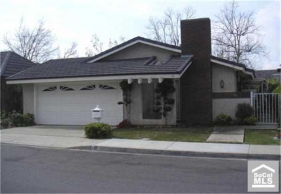


.jpg)





 The owner of todays featured property bought on 4/26/2005 for $675,000. This near peak purchase was financed with a $540,000 first mortgage and a $72,101 second mortgage, and a $62,988 down payment. They didn't refinance, but falling prices have left them underwater. The stopped paying the mortage back in mid 2009, and they have been negotiatiing a short sale ever since.
The owner of todays featured property bought on 4/26/2005 for $675,000. This near peak purchase was financed with a $540,000 first mortgage and a $72,101 second mortgage, and a $62,988 down payment. They didn't refinance, but falling prices have left them underwater. The stopped paying the mortage back in mid 2009, and they have been negotiatiing a short sale ever since.

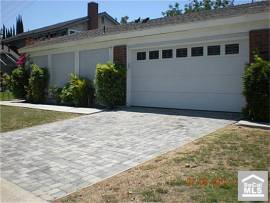






.jpg)


